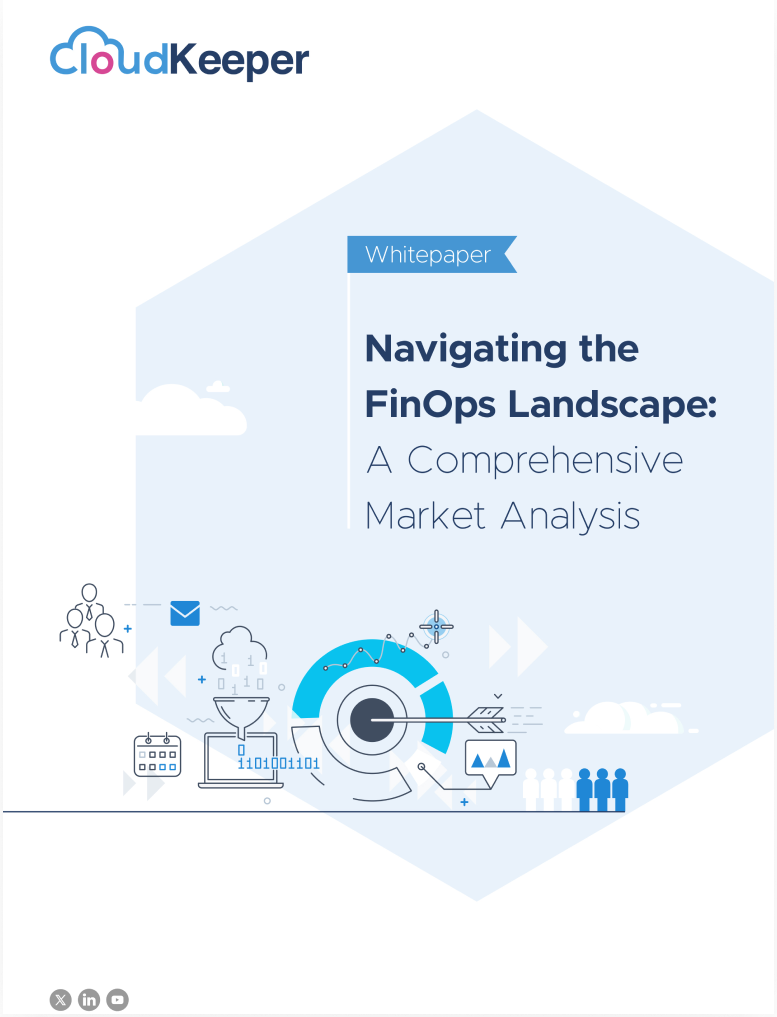Cloud computing costs are set to surpass traditional IT spending, according to research by Gartner. As organizations continue to embrace the cloud, the challenge of managing cloud expenses effectively has come to the forefront.
Studies suggest that 32% of cloud budgets are wasted, 75% of organizations report rising cloud waste, and nearly half (49%) of cloud-based businesses struggle to control costs. These figures highlight why cloud cost optimization is now critical for businesses aiming to enhance financial efficiency and achieve long-term success.
This blog dives into the top strategies that help in GCP cost optimization while maintaining peak performance.
While GCP brings a host of unique advantages, its pricing model—like the pay-as-you-go approach common across cloud providers—requires thoughtful planning and vigilant oversight to effectively manage costs and maintain performance. Fortunately, there are a variety of features, tools, and strategies available to help businesses in Google Cloud cost optimization empowering them to maximize their ROI, which we’ll explore in detail in this blog.
Understanding GCP Pricing
Before diving into GCP cost optimization strategies, it’s crucial to understand the pricing structure. Without this foundation, aligning spending with usage patterns and avoiding unnecessary costs becomes an uphill battle.
Pay-As-You-Go
The pay-as-you-go pricing model provides flexibility by charging users only for the resources they use. It is particularly suitable for businesses with fluctuating or unpredictable workloads, as it allows for easy scaling of resources without long-term commitments. However, this flexibility often comes with higher hourly rates compared to other pricing models.
Long-Term Commitments
Google Cloud offers significant discounts for users willing to commit to using services for extended periods, typically 1 or 3 years. This pricing model, referred to as Committed Use Discounts, helps in cloud cost optimization by saving businesses up to 70% on Compute Engine expenses. The trade-off is reduced flexibility, as organizations must commit to a fixed price and usage level for the duration of the agreement.
Free Tier
The GCP free tier is ideal for individuals and businesses exploring Google Cloud’s offerings or those with minimal usage requirements. It includes access to 24 predefined services, with certain resources always free within usage limits. Users also receive $300 in free credits to try out paid services.
Key Cost Drivers in GCP
Beyond its flexible pricing models, GCP costs are influenced by core service categories such as compute, storage, and networking. Understanding how these services are billed is essential for strategizing Google Cloud cost optimization, as these areas often represent the bulk of cloud expenses.
- Compute: Charges based on VM runtime, with discounts for sustained use or preemptible VMs.
- Storage: Costs depend on data volume, operations, and retrieval fees, especially for archival storage.
- Networking: Ingress is free, but egress costs vary by region and traffic type.
- Cloud SQL: Charges depend on instance type, CPU and memory usage, storage, and networking, with costs varying by region and active runtime for shared-core instances.
- Google Cloud Functions: Pricing is based on function execution duration, invocation frequency, and allocated resources, ensuring cost alignment with specific usage.
To better predict and manage expenses, GCP provides a Pricing Calculator, helping users estimate costs based on their unique requirements. Mastering these basics is the first step toward optimizing your GCP investment effectively.
Challenges in GCP Cost Optimization
There are several challenges organizations face that can make cloud cost optimization complex and difficult.
- Inefficient Resource Utilization: Underutilized services and cloud waste often lead to unnecessary expenses. Compute services like GCP's Compute Engine are costly, and without proper right-sizing and decommissioning of unused resources, these costs can quickly escalate.
- Rising Storage Costs: Storage resources, particularly block storage, are a significant contributor to rising GCP costs. Overprovisioning, driven by the desire to avoid performance issues, often leads to paying for unused storage, exacerbating inefficiency.
- Complex Billing Structure: GCP’s complex pricing model, which includes varied costs for ingress, egress, and usage-based discounts, makes cloud cost optimization difficult. Fluctuating usage patterns further complicate accurate billing predictions.
- Overprovisioning of Resources: Many organizations tend to overprovision compute and storage resources to ensure system performance. However, this results in wasted resources and inflated bills as they pay for capacity they don’t use.
- Lack of Efficient Optimization Tools: GCP’s native tools can fall short in streamlining resource optimization, often requiring manual interventions or third-party solutions. This increases the burden on teams and the complexity of cloud cost optimization efforts.
10 Best Practices to Reduce Your Google Cloud Costs
Now you know the major challenges that could impact your GCP budgets and cause cost overruns. Let’s explore some GCP cost optimization strategies.
These strategies, ranging from simple housekeeping tasks to advanced techniques like leveraging discounts and preemptible VMs, can help you fine-tune your infrastructure, reduce waste, and make the most of your cloud investments.
Gain Visibility into Cloud Costs
A clear view of your cloud usage is key to cost optimization. Regularly monitor your environment to identify inefficiencies, uncover hidden costs, and make informed decisions that keep your spending in check.
Remove Unattached Block-Level Storage Discs
When you terminate a VM, ensure that any unattached block-level storage discs are also deleted. These discs can continue accruing charges even when no longer associated with an active VM. Regular audits of your resources can help you identify and eliminate these unnecessary costs.
Get Rid of Unused IP Addresses
Google charges for external static IP addresses that are not in use. Make it a routine to monitor your environment for unused IPs and remove them. This small practice can prevent unexpected charges and boost your cloud cost optimization efforts.
Schedule Non-Production Virtual Machines
Non-production VMs for development or testing environments can add up quickly when they run 24/7. By scheduling these VMs to only be active during business hours, you can save up to 80%. This is a simple yet effective Google Cloud cost optimization strategy.
Leverage Committed Use Discounts (CUDs)
Committed Use Discounts (CUDs) offer significant savings for businesses with predictable workloads. By committing to a 1-3 year term, organizations can reduce cloud spending by up to 57%. It’s a smart move for those who can forecast their cloud usage with confidence.
Optimize VM Selection for Cost Efficiency
Choosing the right VM type can significantly enhance cloud cost optimization. Use Preemptible VMs for fault-tolerant workloads like big data processing and CI/CD pipelines to save up to 80%. Additionally, leverage Custom Machine Types to align instance sizes with workload needs, avoiding overprovisioning and reducing cloud costs significantly.
Implement Object Lifecycle Management for Storage
Google Cloud Storage offers various storage tiers, and not all data requires high-performance access. Use object lifecycle management to automatically move older or less frequently accessed data to lower-cost storage tiers, ensuring you only pay for the performance you need.
Take Advantage of Sustained Use Discounts (SUDs)
If your workloads consistently use Google Cloud resources, you can benefit from Sustained Use Discounts (SUDs). These discounts are automatically applied based on how long you use specific services, enabling GCP cost optimization without involving any long-term commitments.
Clean Up Unused Resources
It’s easy to accumulate unused resources in your cloud environment. Regularly cleaning up unused instances, IP addresses, or storage buckets helps eliminate waste and reduce your overall cloud expenditure. Setting up automatic clean-up procedures is a proactive approach towards Google Cloud cost optimization.
Work with a Cloud Cost Optimization Partner
While implementing cost-saving strategies internally is important, working with a cloud cost optimization partner could help you achieve far better results. Working with experts like CloudKeeper can help you identify hidden costs, streamline your cloud resources, and implement advanced optimization techniques to reduce your GCP expenses effectively. With the right partnership, you can ensure sustained cloud savings and gain valuable insights into your cloud usage.
By following these strategies and best practices, businesses can see significant reductions in their Google Cloud costs while maintaining performance and scalability.
Conclusion
Google Cloud Platform (GCP) is a standout choice in the cloud industry, holding about 10% of the market share and offering unmatched strengths in data analytics, machine learning, and containerization with Kubernetes. Its capabilities around fast data transfers and low latency make it a go-to option for businesses needing real-time data processing or latency-sensitive applications. With seamless integration into tools like Google Workspace and support for multi-cloud setups, GCP provides the flexibility and reliability modern enterprises demand.
That said, keeping costs under control is just as important. By adopting the GCP cost optimization strategies outlined in this blog—like rightsizing virtual machines, leveraging Committed Use Discounts, and optimizing storage—companies can significantly reduce cloud spending.
Also, cloud cost optimization doesn’t have to be overwhelming. Partnering with experts like CloudKeeper, ensures you’re getting the best value out of your investment.
With GCP’s robust capabilities and a strategic approach to cost efficiency, businesses can not only save money but also reinvest those savings into innovation—unlocking the full potential of their cloud journey.








